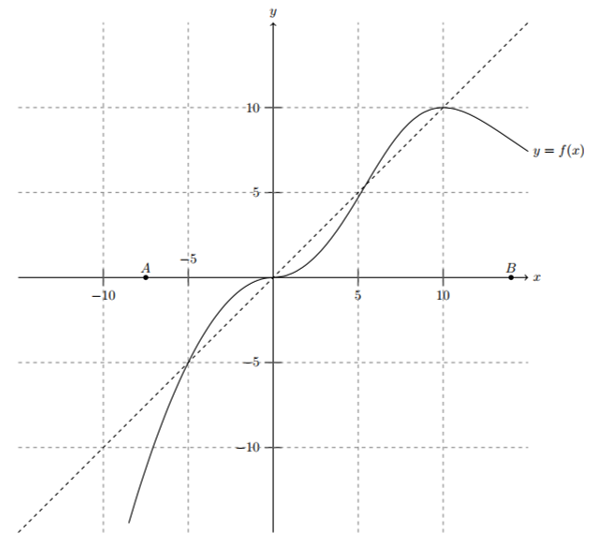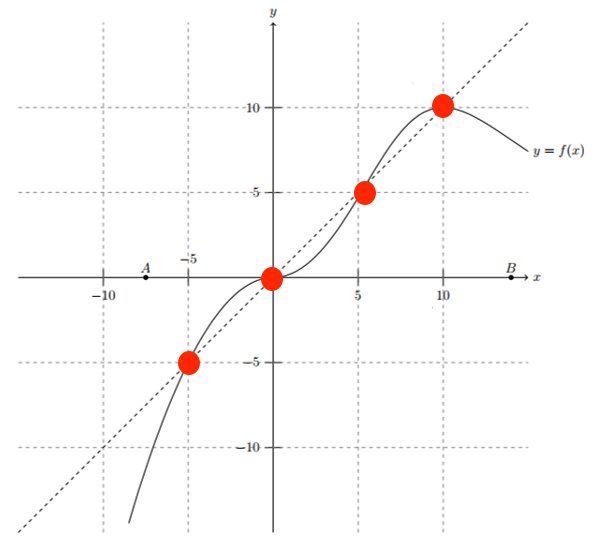Science:Math Exam Resources/Courses/MATH103/April 2017/Question 07 (a)
{{#incat:MER QGQ flag|{{#incat:MER QGH flag|{{#incat:MER QGS flag|}}}}}}
• Q1 (a) • Q1 (b) • Q1 (c) • Q1 (d) • Q1 (e) (i) • Q1 (e) (ii) • Q1 (e) (iii) • Q1 (f) • Q2 (a) • Q2 (b) (i) • Q2 (b) (ii) • Q2 (c) • Q3 (a) • Q3 (b) • Q3 (c) • Q3 (d) • Q4 • Q5 • Q6 (a) • Q6 (b) • Q7 (a) • Q7 (b) • Q7 (c) • Q8 (a) • Q8 (b) • Q8 (c) • Q9 (a) • Q9 (b) • Q9 (c) • Q9 (d) • Q9 (e) •
Question 07 (a) |
|---|
|
The figure below shows the graph and the diagonal (dashed line). Use this plot to answer the following questions: (a) Clearly mark and label all fixed points of the iterated map . |
|
Make sure you understand the problem fully: What is the question asking you to do? Are there specific conditions or constraints that you should take note of? How will you know if your answer is correct from your work only? Can you rephrase the question in your own words in a way that makes sense to you? |
|
If you are stuck, check the hint below. Consider it for a while. Does it give you a new idea on how to approach the problem? If so, try it! |
Hint |
|---|
|
A fixed point of a function is an element of the function's domain that is mapped to itself by the function. That is to say, c is a fixed point of the function f(x) if f(c) = c. This means f(f(...f(c)...)) = fn(c) = c. |
|
Checking a solution serves two purposes: helping you if, after having used the hint, you still are stuck on the problem; or if you have solved the problem and would like to check your work.
|
Solution |
|---|
|
From the hint above, we want to find all the points satisfying the condition . That is to say, a fixed point point needs to have the same coordinates and therefore must be located on the line . Thus we mark the intersections of and the diagonal (dashed line). |
{{#incat:MER CT flag||
}}







